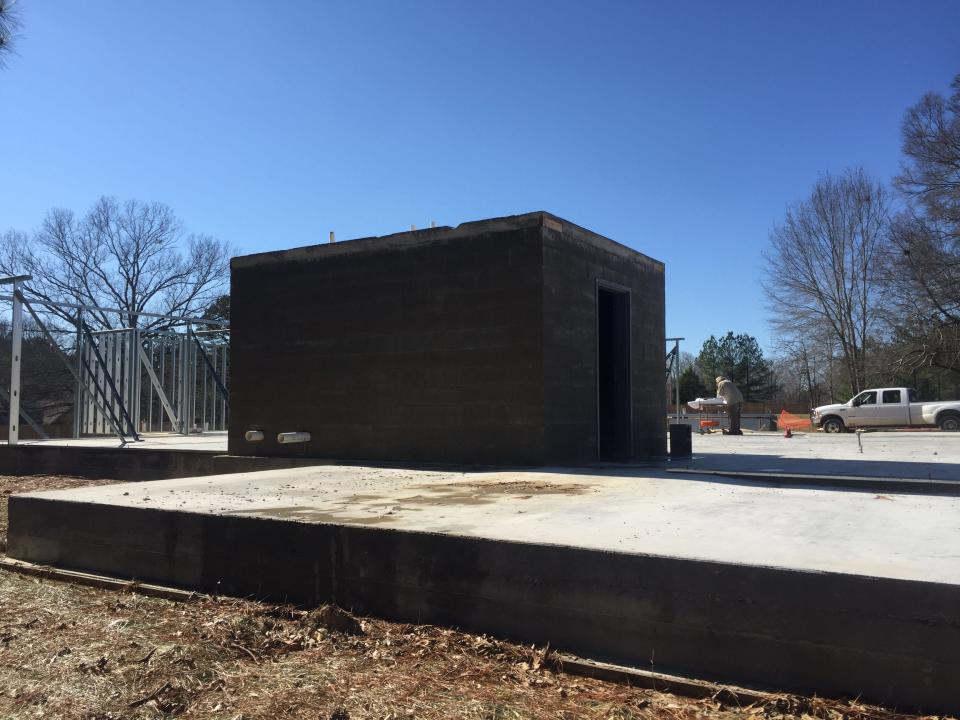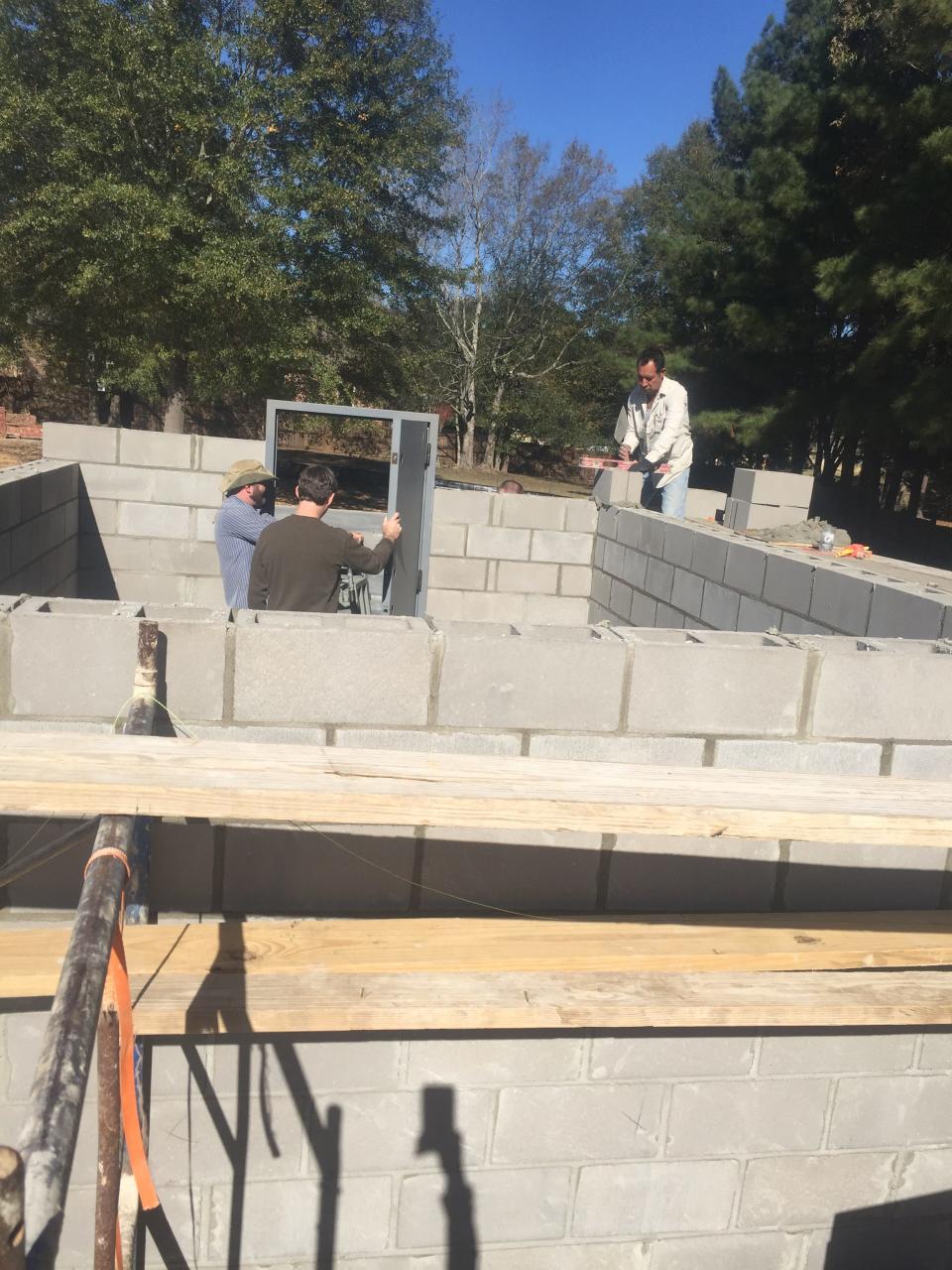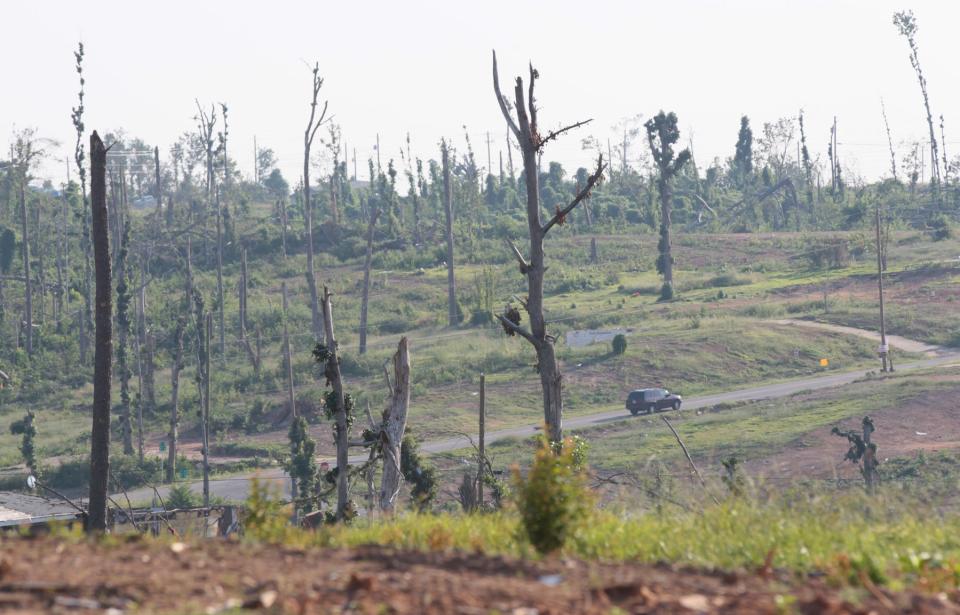The growing threat of tornadoes in the South prompts demand for more storm shelters
There are three reinforced safe rooms that provide shelter during severe weather threats at the Mustard Seed in Brandon, Mississippi. The rooms intentionally feel familiar and double as a laundry room, a library and office space. The Mustard Seed is both a residential facility and community space for adults with developmental disabilities.
The rooms are strong enough to withstand the force of a tornado, with 12-inch thick concrete walls and ceilings, and reinforced steel doors.
“We wanted these rooms to be familiar places for our Seedsters when we have inclement weather,” said Del Adams, the executive director of the Mustard Seed, referring to the program participants. “They know this is the library or an office. It gives them familiarity in uncertain times.”

The Mustard Seed’s safe rooms were installed over a decade ago. Plans for a third residential building will also include a safe room.
“These are spaces they can stay in comfortably for longer while we monitor the weather. It works out well,” Adams said.

In parts of the Deep South more accustomed to hurricanes, tornadoes are increasingly becoming a troublesome new reality that has prompted communities, businesses and homeowners who can afford the cost to invest in storm shelters or safe rooms.
The 2022 tornado season has been especially active. Over a two-week period starting March 22, there were 49 confirmed tornadoes in Mississippi, according to data from the National Weather Service office in Jackson. That’s nearly as many as were reported in all of March, April and May last year, according to weather authorities.
The same severe weather system that spawned storms in multiple states on March 22 resulted in one death in the New Orleans area when an EF-3 tornado touched down in the Arabi suburb. That tornado cut an 11.5-mile path of destruction through a residential neighborhood and had peak wind speeds of 160 mph making it the strongest on record for the New Orleans metropolitan area, according to the National Weather Service.
Tornadoes in the South have become more frequent and stronger
Tornado season peaks in April but typically lasts through the end of May. November and December can also be active months for tornadoes.
The spate of storms in late March seems to be part of a troubling pattern weather experts have noted in recent years as the frequency and strength of tornadoes in the Deep South have grown.
This is largely due to ongoing drought conditions in the Southwest in combination with warm, moist air from the Gulf of Mexico, according to Paul Pastelok, the senior meteorologist and lead long-range forecaster with Accuweather.
The lingering effects of the La Niña weather pattern, resulting in warmer than normal water temperatures in the Gulf of Mexico, is another contributing factor to the higher number of severe storms.
And as the frequency of tornadoes increases, the vulnerability of residents across the southeast has become a top concern.
Unlike the traditional tornado alley in the Plains states, the southeast is more densely populated.
A March 2020 study published by the American Meteorological Society found that the tornado impact potential on mobile homes is about 450% greater in Alabama than Kansas due to the higher number and distribution of mobile homes.
The same study found that nearly 50% of tornado fatalities in the U.S. were among people who sought shelter inside a manufactured home.
“When tornadoes hit the Mississippi Valley and Central Gulf states, you have to think about home structures. These are not built on deep foundations because of the high water table. Underground shelters like you see in the north aren’t feasible,” said Pastelok.
Businesses that sell residential storm shelters have seen an increase in interest from both homeowners and businesses.
Rick Maradiaga, of Torshel Storm Shelters in Jackson, said that over the last six years the company has installed about 1,100 shelters in homes in Tennessee, eastern Texas, Florida, Georgia, Mississippi, Louisiana and Alabama. About 70% of the shelters are above-ground and anchored onto concrete foundations, he said.
Shelters can only be built on new construction, he said, and in-ground shelters can be difficult and more expensive to build depending on the soil content. In Louisiana, for example, the water table is high especially around New Orleans, which is below sea level.
Storm shelters can be built underground while safe rooms are hardened structures designed to protect against extreme weather events like tornadoes and hurricanes. FEMA (the Federal Emergency Management Agency) has specific criteria for how these structures are supposed to be built and also provides community grants for state and locally run community storm shelters. Residential safe rooms can cost upwards of $3,000 depending on the size.
Increased interest in residential storm shelters
In Alabama, state lawmakers have taken steps to make shelters more accessible to residents in recent years.
On April 27, 2011, the state experienced one of the deadliest and most destructive outbreaks of tornadoes in U.S. history, resulting in the loss of 240 lives and thousands injured in Alabama alone.

Nine people died that day when tornadoes swept through Madison County. At the time church and city buildings would open their doors for people seeking shelter, said Scott Worsham, the emergency management officer in Huntsville.
“There were a lot of people who went out and bought safe rooms, and our county government took a serious look at community shelters in rural areas in the county,” he said.
There are now 12 shelters operating in the county although some are privately owned. In the past year, Alabama lawmakers have approved two measures that would make storm shelters more accessible for community members. One law requires counties to designate community storm shelters and removes any liability a church or city building could face for providing shelter. Residents can also apply for a tax credit of up to $3,000 for 50% of the cost of the installation of a residential storm shelter. The structure has to meet FEMA qualifications and has to have been purchased after Jan. 1 of this year.
“It's hard in a populous county to decide where to open one, but now every county around us has community shelters,” said Worsham.
Interest in residential tornado shelters also increased following the violent tornado outbreak that struck Kentucky in December, according to Jim Bell, the director of operations at the National Storm Shelter Association. The organization was founded after the Oklahoma City tornado outbreak in May 1999, which drove interest in residential safe rooms. Bell said however these shelters aren’t always built to code or properly tested to ensure their safety. The NSSA has worked closely with FEMA to develop codes for how these structures should be built.
But as more communities in the South have to contend with the potential impact of tornadoes, Bell said awareness and preparation are essential. He said efforts to update building codes to require shelters have slowly taken shape.
Communities need to mitigate losses before a storm hits and plans need to be in place whether they involve a reinforced safe room or a community shelter.
“People need to be prepared as to what they are going to do when a tornado hits. You need to know where to go and what you need to have in your safe place. The reality is it is too late if you are waiting until then,” he said.
Maria Clark is a general assignment reporter with The American South. Story ideas, tips, questions? Email her at mclark@gannett.com or follow her on Twitter @MariaPClark1. Sign up for The American South newsletter. Follow us on Instagram, Facebook and Twitter.
This article originally appeared on The American South: Tornado threats in the South prompt demand for more storm shelters

